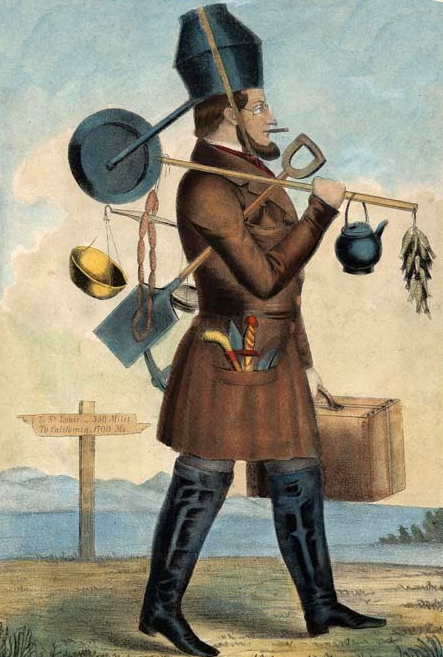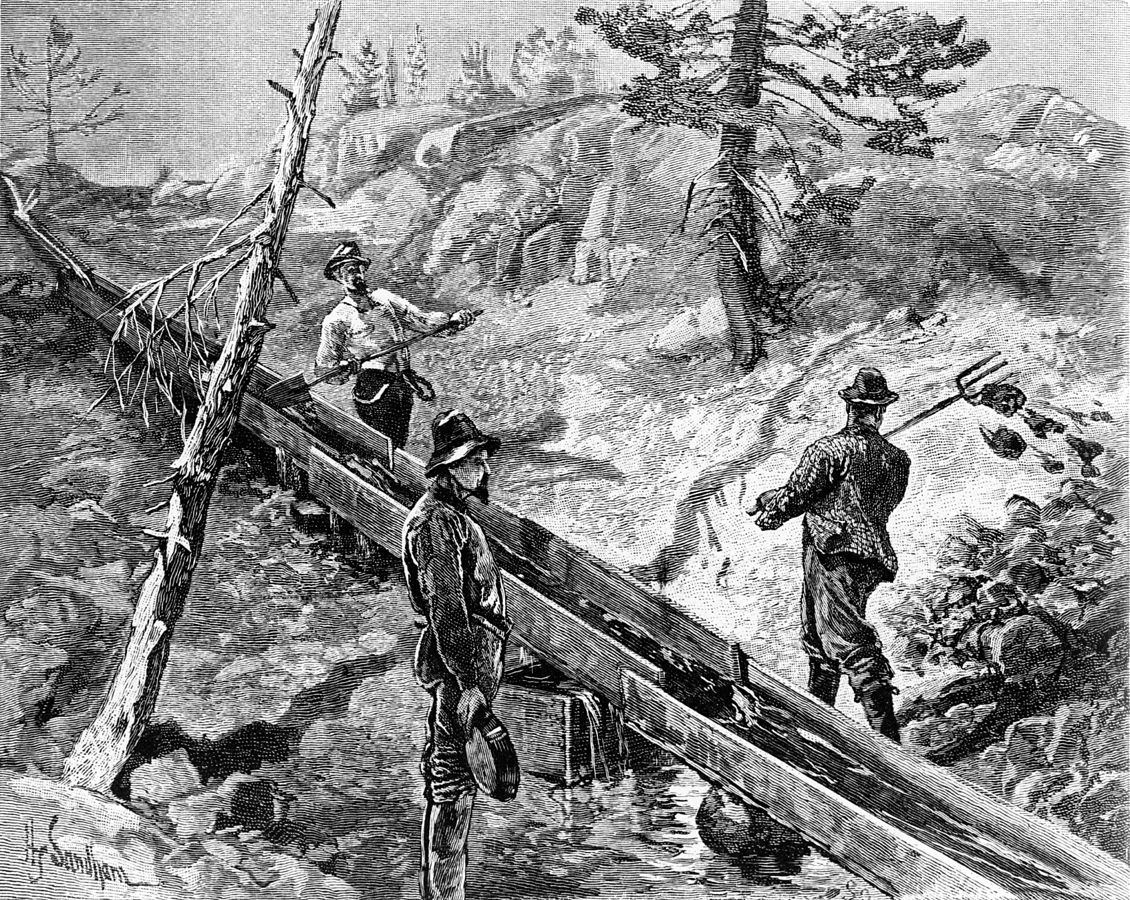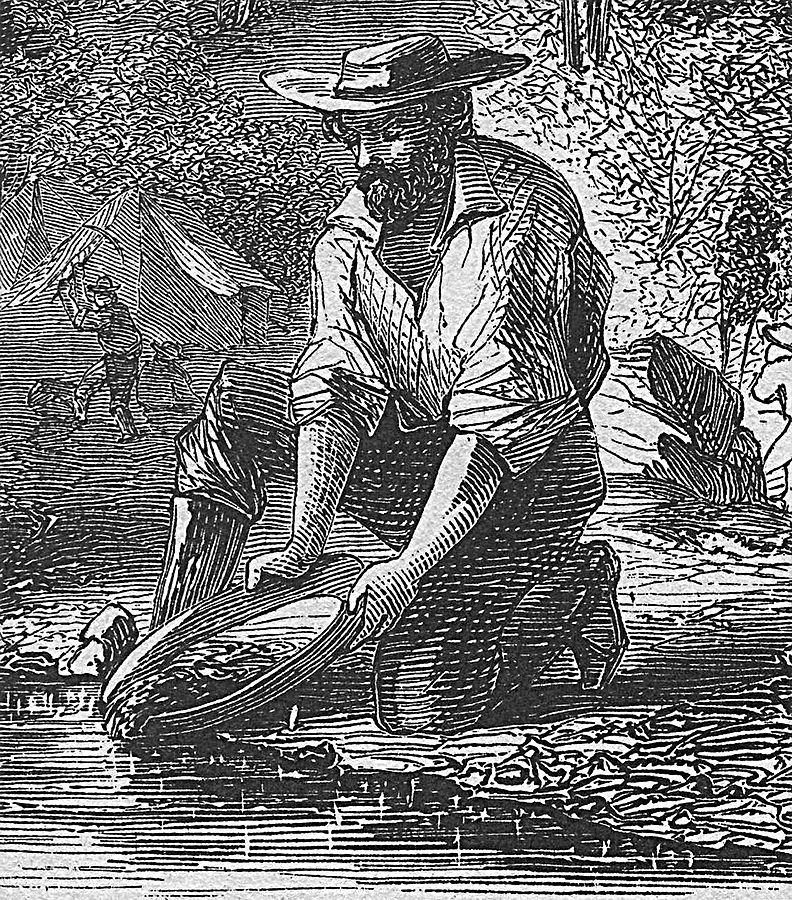

In January of 1848 James Marshall found gold at Sutter's Mill in California. Word spread like a wild fire. The news went all the way to the east coast and then quickly to other countries. Over the next year tens of thousands went there in search of gold. Those who went looking for gold were called the "forty-niners." A few became rich, but most did not.
With the discovery of gold, things changed quickly in California. In March 1848, there were 7,500 people of European descent. Of those 800 were Americans. Two years later, the population grew to more than 100,000 people. By the mid 1850's there were some 300,000 in the new state.
Mining towns sprang up near the places where gold was found. These towns would often have one main street with a saloon as the central place to gather. In the saloon the miners could get drinks and do some gambling. Fighting was not uncommon. All too often justice was decided by the winner of a brawl or a gun fight. About 95 percent of the mining towns were made up of young men.

Life for the California miner was harsh and rough. First, getting to California for most was challenging. It was a long, difficult trip that took months to make it there. Some forty-niners sailed to California while others went overland. There were many things that made it a hard journey. They would get sick, lonely, and they would struggle to get by. At times they may go hungry. There were also many things that distracted them. Once they arrived, their troubles were not over. There were many challenges.
San Francisco became a busy place. It was at the crossroads of the gold rush. In 1848 its population was 800. In 1853 it had grown to 50,000 people. Tens of thousands of people passed through it. With all of the new arrivals, businesses opportunities followed for many of those people. Many jobs needed to be filled. Life in California changed very quickly as a result of the gold rush.
California's economy grew rapidly. With the population growth people needed goods and services. Roads were needed. Stores, food, clothes, and other supplies needed to be provided. They also needed places to stay. Business and industry grew in many ways. In the first five years after Marshall's discovery, 12,000,000 ounces of gold were discovered. Miners spent money and used their gold to buy what they needed. What they spent went into many businesses.

There is an interesting story about a man named Sam Brannan. Before gold was discovered, Sam Brannan had a general store in San Francisco. When he learned of the gold, he quietly bought up all of the shovels, pick axes, and pans he could find. Then it is said that he held samples of gold in both hands and went through the streets of San Francisco shouting that there was gold on the American River. Reportedly he had bought up the pans he sold for 20 cents and sold them for 15 dollars. Many who heard him, or about the gold, left San Francisco in search of it. The gold rush was on. People were in a 'rush,' and they needed a number of goods and supplies. Brannan had the supplies. Then he opened more stores. He became one of the richest persons in San Francisco. What Sam Brannan did in business is a good example of supply and demand. If the demand for goods is high and the supply is limited, prices can be raised.
Big changes for California were happening quickly. Its expansion was so rapid it was like an explosion. With all this tremendous growth and development, California was admitted as a state in 1850.

Text Credits:
http://www.ushistory.org/us/29e.asp;
http://explore.museumca.org/goldrush/fever05.html;
The American Miracle: Divine Providence in the Rise of the Republic by Michael Medved (Marshall’s discovery of gold, population numbers, and gold numbers; Sam Brannan’s general store and principle of supply and demand)